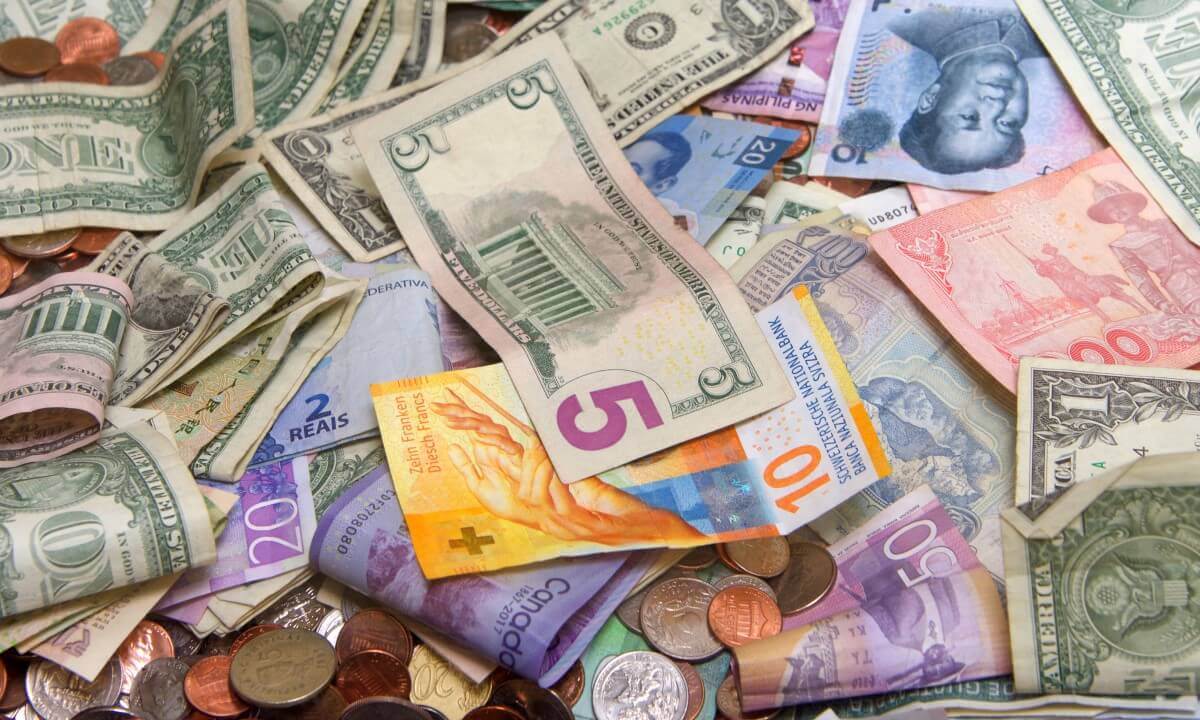The rouble plunged further on Tuesday after partly rebounding earlier. Meanwhile, the U.S. dollar climbed up, and the Swiss franc skyrocketed to a seven-year high. Traders sought out the safe-haven currencies while they awaited developments in Ukraine.
Russia’s invasion of Ukraine has rocked financial markets in recent days. This is the biggest assault on a European state since World War Two. Western authorities are trying to stop Russia with various sanctions, including limiting Moscow’s ability to deploy its $630 billion of foreign reserves and cutting off some Russian banks from the SWIFT financial network.
On Tuesday, global stock markets initially showed some signs of regaining their composure. Despite that, European indexes and Wall Street futures remain firmly in the red thus far. The rouble plummeted down by around 4% on the day, exchanging hands at 97.036 per dollar, a day after it dropped to a record low of 120 per dollar.
Earlier on Tuesday, the currency had recovered some of those heavy losses as an emergency rate hike by Russia’s central bank boosted it. Still, the rouble shaved off almost 30% from its best levels this year.
The U.S. dollar, which rallied last week on safe-haven flows, continued to soar, leaving the dollar index higher by 0.2% at 96.96. On the other hand, the euro tumbled down by 0.4% on the day at $1.1175.
Neil Jones, the head of FX sales at Mizuho, said that traders were watching the rouble, using that to determine the direction of other currencies. According to Jones, Rouble is currently the barometer that the rest of the Forex market follows.
How did the Japanese Yen fare?
The safe-haven yen surged forward by about 0.2% against the dollar, trading at 114.790 at last. At the same time, the Swiss franc skyrocketed to its strongest level since 2015 against the euro, with the pair exchanging hands at 1.0248 on Tuesday.
Mizuho’s Jones noted that some market players were disappointed that the Japanese yen had been underperforming the Swiss franc as a safe-haven currency. He suggested one reason may be that Japan has higher energy demands. Buying energy involves selling its currency to buy greenbacks, which puts depreciation pressure on the yen.
Meanwhile, the Swiss National Bank’s sight deposits changed insignificantly in February. That suggests the central bank may have abandoned its attempts to slow the franc’s appreciation.
According to a Deutsche Bank index’s measurement, currency volatility hit its highest level since late 2020. ING FX analysts noted that today, the focus would be on whether sanctions/retaliation will start impacting the commodity flows from Russia. Investors are also waiting to see whether Russia’s central bank will step in with more measures to support its currency.
Among the G10 currencies, the euro, Sweden’s crown, and the British pound could suffer the most if sanctions affect the flow of Russian gas into Europe. However, Norway’s crown may keep benefiting from high gas prices.
What about the Aussie and the Kiwi?
The Australian dollar jumped to its highest level since mid-January in early trading before lowering slightly to trade up only by 0.1% on the day at $0.72715. This is its third consecutive day of gains.
On Tuesday, Australia’s central bank held interest rates at a record low. The country cited the war in Ukraine as a major new source of uncertainty as it stressed patience on tightening policy. The New Zealand dollar remained steady at $0.67755.
Some of the demand for Australian and New Zealand dollars may be caused by geography. These countries are far enough away from the troubles in Europe and little exposed to Russian trade.
In Asia, emerging market currencies strengthened as the market panic subsided somewhat. Still, investors’ focus remains on the rapid developments around Russia’s military operation in Ukraine. On Monday, high-level talks between Moscow and Kyiv ended with no agreement except to keep talking. It was enough to usher in a calmer market backdrop, though.
Piotr Matys, the senior FX analyst at In Touch Capital Markets, stated that such a drastic rate hike isn’t sufficient to improve negative sentiment towards the rouble. He also added that it’s impossible for foreign investors to invest in Russian assets. Thus, the rouble is failing to benefit from the attractive carry trade.
On Tuesday, Turkey’s lira plummeted by 0.6%. A survey showed that factory activity in the country barely grew for a second consecutive month in February amid sharp price rises and a production slowdown.











